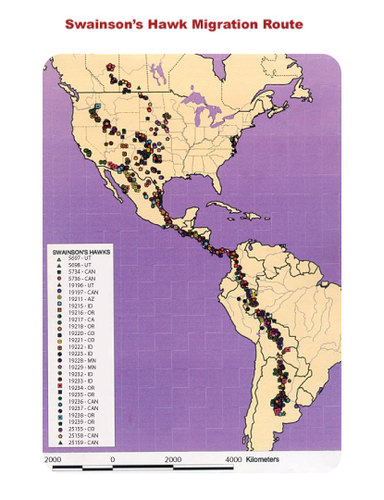6.10: Population Growth
- Page ID
- 12138

What would old luggage have to do with population growth?
Moving into an area, or immigration, is a key factor in the growth of populations. Shown above is actual vintage luggage left by some of the millions of immigrants who came through Ellis Island and into the United States.
Population Growth
Populations gain individuals through births and immigration. They lose individuals through deaths and emigration. These factors together determine how fast a population grows.
Population Growth Rate
Population growth rate (r) is how fast a population changes in size over time. A positive growth rate means a population is increasing. A negative growth rate means it is decreasing. The two main factors affecting population growth are the birth rate (b) and death rate (d). Population growth may also be affected by people coming into the population from somewhere else (immigration, i) or leaving the population for another area (emigration, e). The formula for population growth takes all these factors into account.
r = (b + i) - (d + e)
- r = population growth rate
- b = birth rate
- i = immigration rate
- d = death rate
- e = emigration rate
Dispersal
Other types of movements may also affect population size and growth. For example, many species have some means of dispersal. This refers to offspring moving away from their parents. This prevents the offspring from competing with the parents for resources such as light or water. For example, dandelion seeds have “parachutes.” They allow the wind to carry the seeds far from the parents (see Figure below).
 Dandelion Seeds. These dandelion seeds may disperse far from the parent plant. Why might this be beneficial to both parents and offspring?
Dandelion Seeds. These dandelion seeds may disperse far from the parent plant. Why might this be beneficial to both parents and offspring?Migration
Migration is another type of movement that changes population size. Migration is the regular movement of individuals or populations each year during certain seasons. The purpose of migration usually is to find food, mates, or other resources. For example, many northern hemisphere birds migrate thousands of miles south each fall. They go to areas where the weather is warmer and more resources are available (see Figure below). Then they return north in the spring to nest. Some animals, such as elk, migrate vertically. They go up the sides of mountains in spring as snow melts. They go back down the mountain sides in fall as snow returns.
 Swainson’s hawks migrate from North to South America and back again each year. This map shows where individual hawks have been identified during their migration.
Swainson’s hawks migrate from North to South America and back again each year. This map shows where individual hawks have been identified during their migration.
Summary
- Population growth rate is how fast a population changes in size over time.
- Population growth is determined by rates of birth, death, immigration, and emigration.
Review
- Define immigration and emigration.
- What is migration? Give an example.
- Write the formula for the population growth rate. Identify all the variables.
- What is dispersal? State why dispersal of offspring away from their parents might be beneficial
| Image | Reference | Attributions |
 |
[Figure 1] | Credit: U.S. Geological Survey;National Institutes of Health (NIH) Source: commons.wikimedia.org/wiki/File:Swainson%27s_hawk_migration_route.jpg ; commons.wikimedia.org/wiki/File:Community_Immunity.jpg License: Public Domain |
 |
[Figure 2] | Credit: John Liu;CK-12 Foundation Source: http://www.flickr.com/photos/8047705@N02/5572197407/ ; CK-12 Foundation License: CC BY 2.0 |
 |
[Figure 3] | Credit: U.S. Geological Survey Source: commons.wikimedia.org/wiki/File:Swainson%27s_hawk_migration_route.jpg License: Public Domain |

